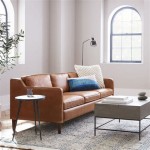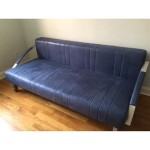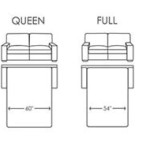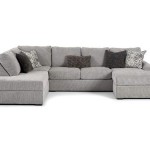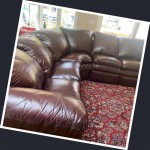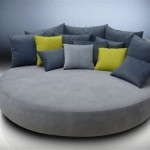Best Sofas For a Small Space: Maximizing Comfort and Style
Furnishing a small living space presents unique challenges. Choosing the right sofa is paramount, as it often serves as the focal point and a key element of comfort. The goal is to select a sofa that maximizes available space without compromising on aesthetics or functionality. Careful consideration of size, style, configuration, and storage options is crucial in achieving a balanced and inviting atmosphere.
This article explores various sofa types suitable for small spaces, providing detailed insights into their features, benefits, and potential drawbacks. This information will assist in making an informed decision that optimizes both the spatial efficiency and overall design of a compact living area.
Sofa Types Ideal for Small Spaces
Several sofa designs are specifically tailored for smaller footprints. By understanding the nuances of each type, individuals can select the option that best aligns with their lifestyle and spatial constraints.
Loveseats: Loveseats are compact sofas typically designed to seat two people comfortably. Their reduced length makes them an excellent choice for apartments, condos, or smaller living rooms where a full-sized sofa would overwhelm the space. Loveseats are available in a variety of styles, from traditional to contemporary, allowing for seamless integration with diverse interior design schemes. The seat depth can be another deciding factor, with shallower depths further conserving space.
Sectional Sofas (Specifically Smaller Configurations): While sectional sofas are often associated with larger rooms, smaller configurations exist that are well-suited for compact spaces. Look for sectionals with only two or three pieces, such as a loveseat combined with a chaise lounge. These smaller sectionals provide ample seating and lounging space without dominating the entire room. Modular sectionals, which consist of individual pieces that can be rearranged, offer even greater flexibility. Carefully planning the layout of a sectional sofa is essential to ensure optimal space utilization and traffic flow.
Sleeper Sofas: Sleeper sofas provide a dual-purpose solution, functioning as both a sofa and a guest bed. This makes them invaluable for small apartments or homes where space is limited and accommodating overnight guests is a frequent requirement. When selecting a sleeper sofa, it is crucial to consider the comfort of both the seating and the sleeping surface. Memory foam mattresses are a popular choice due to their superior comfort and support. It is also important to measure the overall dimensions of the sofa in both its closed and open positions to ensure it fits comfortably within the designated space.
Futons: Futons are another versatile option that can serve as both a sofa and a bed. They typically feature a frame that unfolds to create a flat sleeping surface. Futons are often more affordable than sleeper sofas, but the comfort level can vary significantly depending on the mattress quality. When selecting a futon, consider the thickness and material of the mattress to ensure adequate support and comfort. Futons are available in a range of styles, from minimalist to more contemporary designs, allowing for seamless integration with various decor styles. Consider the ease of converting the futon between sofa and bed positions.
Armless Sofas: Armless sofas offer a streamlined and space-saving design by eliminating the bulky armrests. This allows for a more compact footprint and a cleaner, more modern aesthetic. Armless sofas can be easily paired with side tables or accent chairs to provide additional arm support and functionality. They are particularly well-suited for small apartments or studios where maximizing floor space is paramount. The absence of arms can also create a more open and airy feel within the room.
Corner Sofas: Corner sofas are designed to maximize seating capacity in small spaces by utilizing otherwise unused corners. These sofas typically consist of two or three pieces that form an L-shape, providing ample seating for multiple guests. Corner sofas can be particularly effective in creating a cozy and inviting atmosphere in a small living room. When selecting a corner sofa, it is crucial to measure the dimensions of the corner space accurately to ensure a proper fit. Consider the orientation of the corner (left or right) to ensure the sofa aligns with the layout of the room.
Factors to Consider When Choosing a Small Space Sofa
Beyond the basic sofa type, several other factors play a critical role in selecting the optimal sofa for a small space. These considerations include size, style, fabric, color, storage options, and overall comfort.
Size and Dimensions: Accurately measuring the available space is the first and most crucial step in selecting a sofa. Consider both the length and depth of the sofa, as well as the height of the backrest. Use painter's tape to mark the dimensions of the sofa on the floor to visualize its actual footprint within the room. Leave adequate space for walking around the sofa and accessing other furniture. A sofa that is too large will overwhelm the space and make the room feel cramped.
Style and Design: The style of the sofa should complement the overall design aesthetic of the room. Consider the existing furniture, wall colors, and flooring when selecting a sofa style. A minimalist sofa with clean lines and neutral colors will often work well in a small space, as it creates a sense of openness and airiness. Avoid sofas with overly ornate details or bulky frames, as these can visually clutter the room. Choose a style that reflects personal taste while considering maximizing a small space.
Fabric and Material: The fabric of the sofa will significantly impact its appearance, durability, and comfort. Consider the lifestyle and usage of the sofa when selecting a fabric. For families with children or pets, durable and stain-resistant fabrics such as microfiber or treated cotton are excellent choices. Leather sofas offer a luxurious and durable option, but they can be more expensive. Lighter-colored fabrics can help to brighten up a small space and create a more open feel. Consider the texture of the fabric and how it will feel against the skin. Woven fabrics can also add texture and depth to a space.
Color and Pattern: The color of the sofa can significantly impact the overall mood and ambiance of the room. Lighter colors tend to make a space feel larger and brighter, while darker colors can create a more cozy and intimate atmosphere. Neutral colors such as beige, gray, and white are versatile choices that can easily be paired with other furniture and accessories. If opting for a patterned sofa, choose a small-scale pattern that won't overwhelm the space. Avoid large, bold patterns, as these can visually shrink the room. Consider the existing color palette of the room and choose a sofa color that complements the overall scheme.
Storage Options: Sofas with built-in storage compartments can be a valuable asset in small spaces. Storage ottomans, lift-up seats, and hidden drawers provide a convenient way to store blankets, pillows, books, and other items. This helps to keep the room clutter-free and organized. When selecting a sofa with storage, ensure that the storage compartments are easily accessible and large enough to accommodate the intended items. Consider the type of storage options that best suit your needs and the layout of the room.
Comfort and Support: While space-saving is a primary concern, comfort should not be sacrificed. Sit on the sofa before purchasing to assess its comfort level. Consider the firmness of the cushions, the height of the backrest, and the overall ergonomics of the design. Look for sofas with supportive cushions and a comfortable seating depth. Consider the types of activities that will be performed on the sofa (e.g., reading, watching television, entertaining guests) and choose a sofa that is appropriate for those activities. Consider the long-term comfort and durability of the sofa when making a purchasing decision.
Maximizing Space with Sofa Placement and Complementary Furniture
The placement of the sofa within the room and the selection of complementary furniture can significantly impact the overall sense of space and flow. Strategic placement and smart furniture choices can make a small space feel larger and more inviting.
Strategic Sofa Placement: Avoid placing the sofa directly against a wall, as this can make the room feel smaller and more confined. Instead, try pulling the sofa a few inches away from the wall to create a sense of depth. Consider placing the sofa diagonally across a corner to maximize seating capacity and create a more dynamic layout. Experiment with different sofa placements to find the optimal arrangement for the room. Ensure that there is adequate space for walking around the sofa and accessing other furniture. Consider the location of windows and doorways when determining the best sofa placement.
Complementary Furniture Choices: Select furniture that is proportional to the size of the room. Avoid large, bulky pieces that will overwhelm the space. Opt for smaller, more streamlined furniture with clean lines. Consider using multi-functional furniture, such as coffee tables with storage or nesting tables that can be easily tucked away when not in use. Use mirrors to create the illusion of more space. Hang mirrors on walls to reflect light and visually expand the room. Select light and airy window treatments that allow natural light to filter into the room. Avoid heavy curtains or drapes that can make the room feel dark and confined. Use rugs to define different areas within the room and create a sense of visual separation. Select rugs that are appropriately sized for the space and that complement the overall design aesthetic.
Utilizing Vertical Space: Maximize vertical space by incorporating tall bookshelves or floating shelves. These can provide ample storage without taking up valuable floor space. Hang artwork or decorative items on the walls to draw the eye upward and create a sense of height. Consider using floor lamps to provide ambient lighting without taking up table space. Use vertical storage solutions to keep clutter off the floor and create a more organized and spacious environment.
Creating a Focal Point: Establish a focal point within the room to draw the eye and create a sense of visual interest. This could be a fireplace, a large window, or a striking piece of artwork. Arrange the furniture around the focal point to create a balanced and harmonious layout. Avoid overcrowding the room with too many decorative items. Less is often more when it comes to decorating a small space.
By carefully considering these factors, it is possible to select a sofa that not only fits comfortably within a small space but also enhances its overall aesthetic and functionality. The key is to prioritize space-saving designs, choose appropriate fabrics and colors, and strategically arrange the furniture to maximize the available area.

20 Best Sofas For Small Living Rooms Plus Expert Advice

29 Best Small Sofas To Fit Into Tight Spaces

The Best Sofas For Small Spaces Everygirl

Best Modular Sofas Small Space Sectionals 2024

12 Of The Best Minimalist Sofa Beds For Small Spaces

29 Best Small Sofas To Fit Into Tight Spaces

Here Are The 5 Best Sofa Sets For Small Spaces Homelane Blog

29 Best Small Sofas To Fit Into Tight Spaces

These Are The Best Sofas For Small Spaces Of 2024 Most Comfortable Sofa Bed Couches

Here Are The 5 Best Sofa Sets For Small Spaces Homelane Blog

